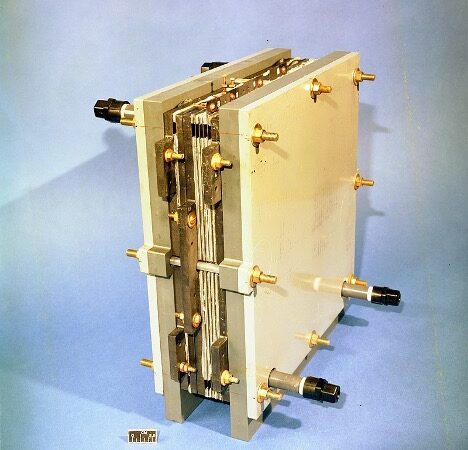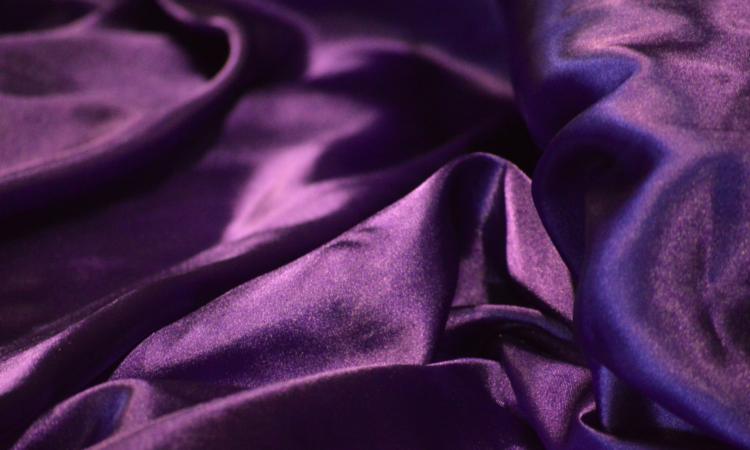Repurposing the Inverse Electron Demand Diels Alder chemistry to create robust DNA-based devices that operate effectively within living cells.
Discovery of Novel Compounds for the Treatment of Glaucoma: The Silent Thief of Sight
Researchers have discovered a new series of potent compounds for the treatment of glaucoma.
Got Carrots?… Harnessing Nature’s Enzymes to Reduce Ketones to Chiral Alcohols
Got carrots? Researchers have developed a new way to enantioselectively reduce ketones to alcohols.
Your next plastic bottle could be made from sawdust
Researchers have found a way to make methoxyterephthalic acid, a precursor to commonly used plastics, from sawdust.
Sunlight to heat: New solid materials store and release solar energy by rotating bonds
A new class of light-absorbing solids isomerizes to store light energy as heat.
Fungi make molecules for batteries
A active material for redox flow batteries was synthesized from fungi to create a renewable feedstock.
Chemists figure out how the grass pea makes its BOS neurotoxin
One of the most abundant South Asian and Sub-Saharan African legumes is the hardy, nutritional grass pea. However, the vegetable naturally produces a paralyzing neurotoxin, and the exact mechanism has long eluded scientists – until now.
Non-invasive, low molecular weight, biomarker method for detection of skin cancer.
Development of a new, non-invasive and topical sampling method uses low molecular weight, skin cancer biomarkers for better detection for early stages of skin cancer diagnostics.
Unmasking COVID-19 infections
As the global COVID-19 pandemic rolls into its third year many of us wear masks almost all day at work or in the community. Read how these researchers have developed a sensor that can be embedded into your mask, which collects your exhaled breath to act as a COVID-19 test for the end of the day.
FINDING A DIVERSE ANTI-INFLUENZA MOLECULE
We will continue coming across new viral proteins and viruses, so it doesn’t hurt to be prepared for those. The work of White et al helps in giving a starting point for medicines against the Influenza viruses.
Upcycling Plant Matter
Avocado peels and uprooted invasive plants can become a source for anti-inflammatories. I’ll toast to that!
Working out what worked (or didn’t) in a work-up
In organic chemistry, once your reaction is over you generally “work-up” the mixture. But what happens if the work-up changes the outcome?
Another side (product) of synthesising antibiotic, daptomycin
Finding new antibiotics is difficult. Synthesising those new antibiotics can be just as hard, and sometimes is takes a long time to find a good approach. And sometimes the most important step in synthesis optimisation is characterising your side-products.
DISGUISING PEPTIDES FOR BETTER ANTI-DIABETIC MEDICINES
In diabetics, insulin production is reduced as a protease inactivates GLP1 responsible for insulin production. Administration of GLP1 could help, but it needs to be altered to sneak past the protease.
Biosensors from graphene-wrapped nanofibers
Using nanofibers to create biosensors decreases cost and wrapping them in graphene increases their conductivity.
Harnessing bacteria to become royalty
Engineering bacteria to make the dye ‘royal purple’
Masked Entry – Increasing cell permeability of large molecules
Developing a drug that is able to enter the cell and interact with its target is no mean feat, especially for large molecules. Read about how this group ‘masked’ large molecules to improve their cell permeability.
Molecular tweezers pick viral membranes apart
While most scientists search for specific treatments for viruses like Ebola, Zika and SARS-Cov-2, non-specific methods can have broad impact. Researchers from the United States and Germany joined forces to make molecular “tweezers” that pick apart viruses to death.
Release the molecule! Photolabile protecting groups
How do you design a “cage” for a molecule? And how do you release it again, selectively? Find out about a rationally designed red-light labile protecting group.
Monitoring plant maturation with a Wack reaction
When the authors’ blurb about their own work is “Okay, bloomer,” you know you have to read it.
Chemistry & COVID-19
The COVID-19 pandemic is consuming our news feed at the moment – while you’re self-isolating read about some of the great science research going on to combat our newest virus.
Tackling Diabetes with Nanoparticles
Diabetes Mellitus affects 8.5% of the world adult population and tackling it requires systematic dosing. Researchers have developed a unique NP that can substantially decrease the dosage of insulin and increase patient compliance.
Seeing the Invisible
Ever wondered how scientists know what is going on inside a cell, or how you could design a chemical probe to tell you more? There’s a lot of things to consider, find out more here.
Seeking inspiration from nature to treat opioid addiction
Researchers have looked at the biosynthetic pathways in plants to help them synthesise the potential anti-addiction agents ibogaine and voacangine.
Development of Sensors for Amino Acids
Researchers develop an easy to use method to identify the chirality of the amino acids, amines and alcohols.

























